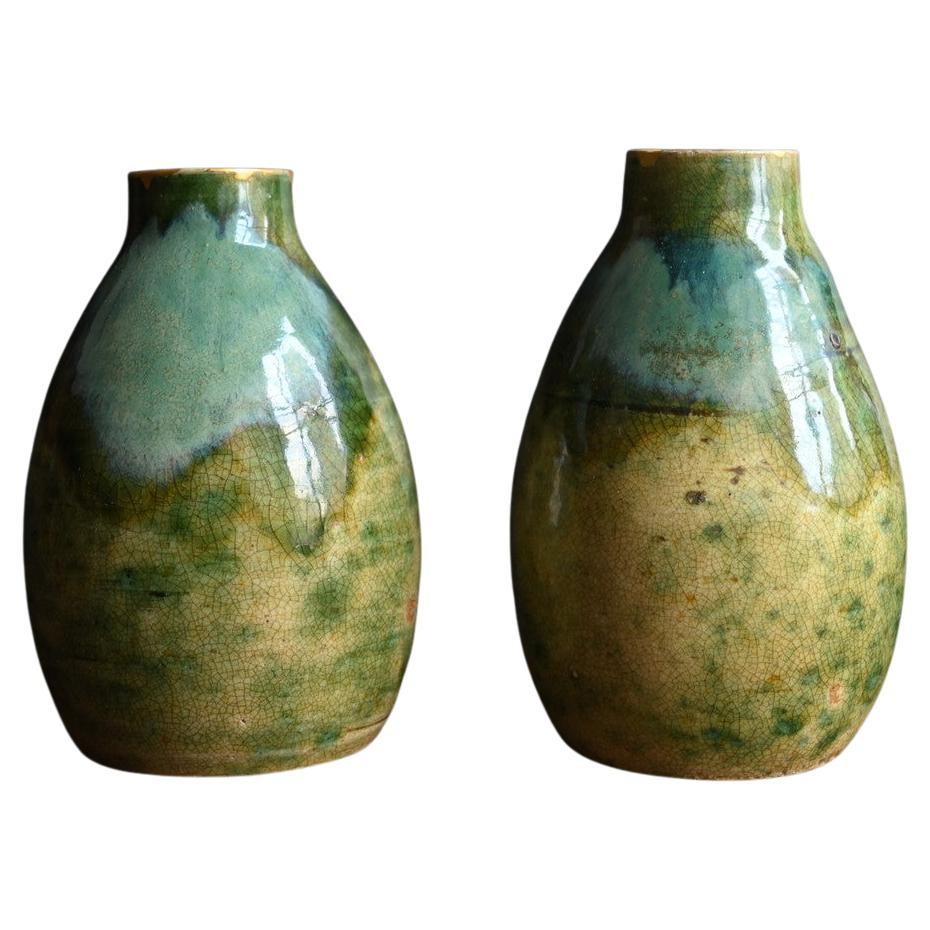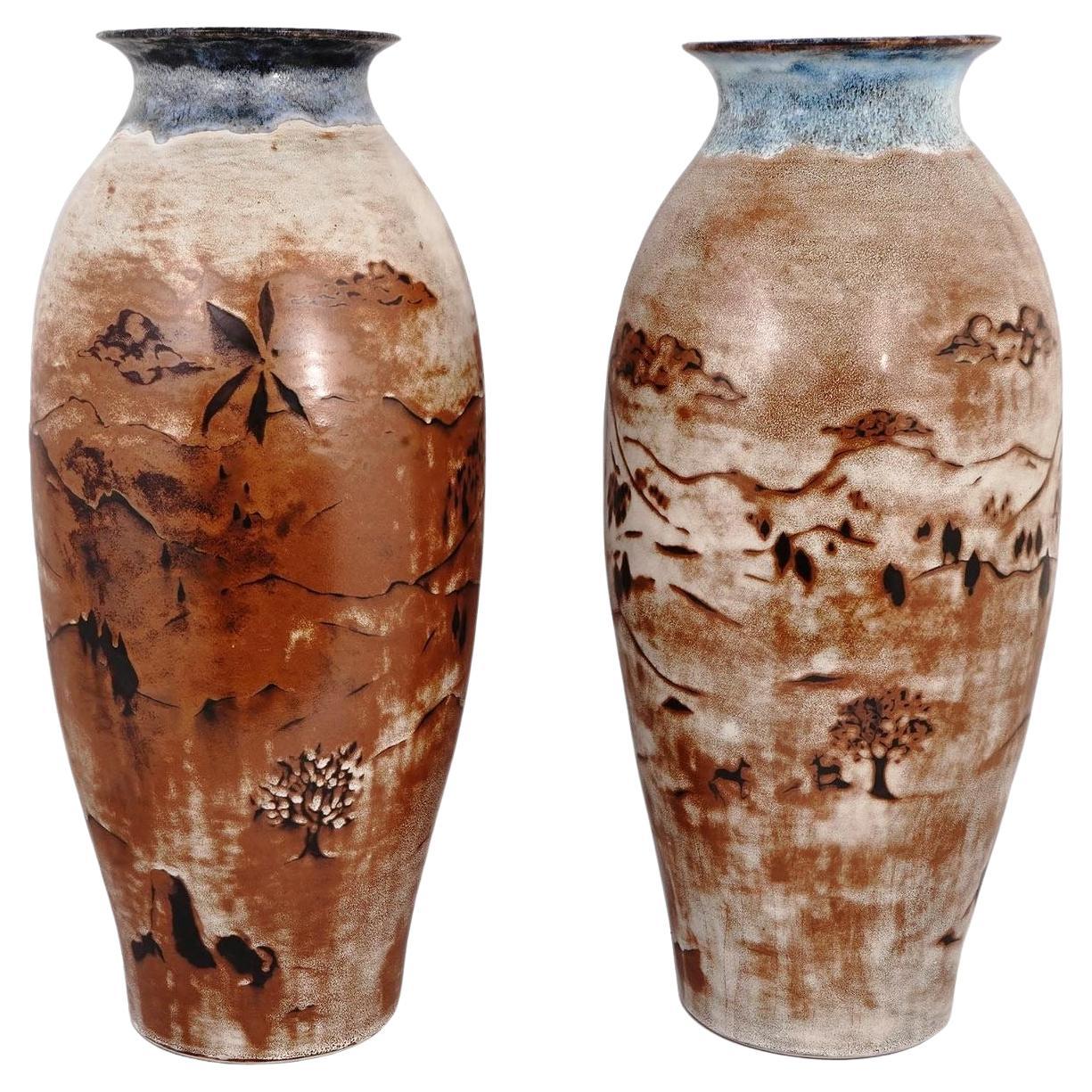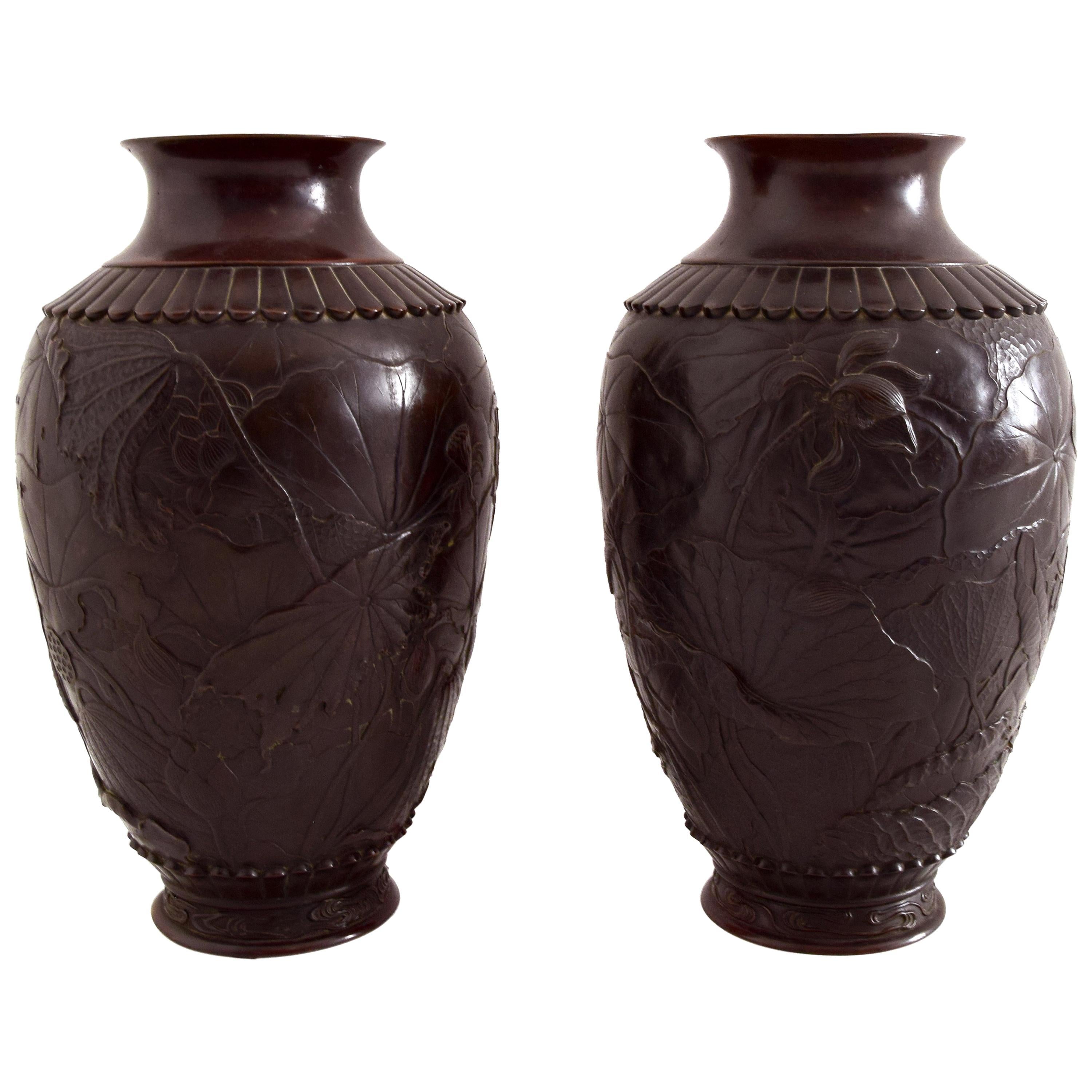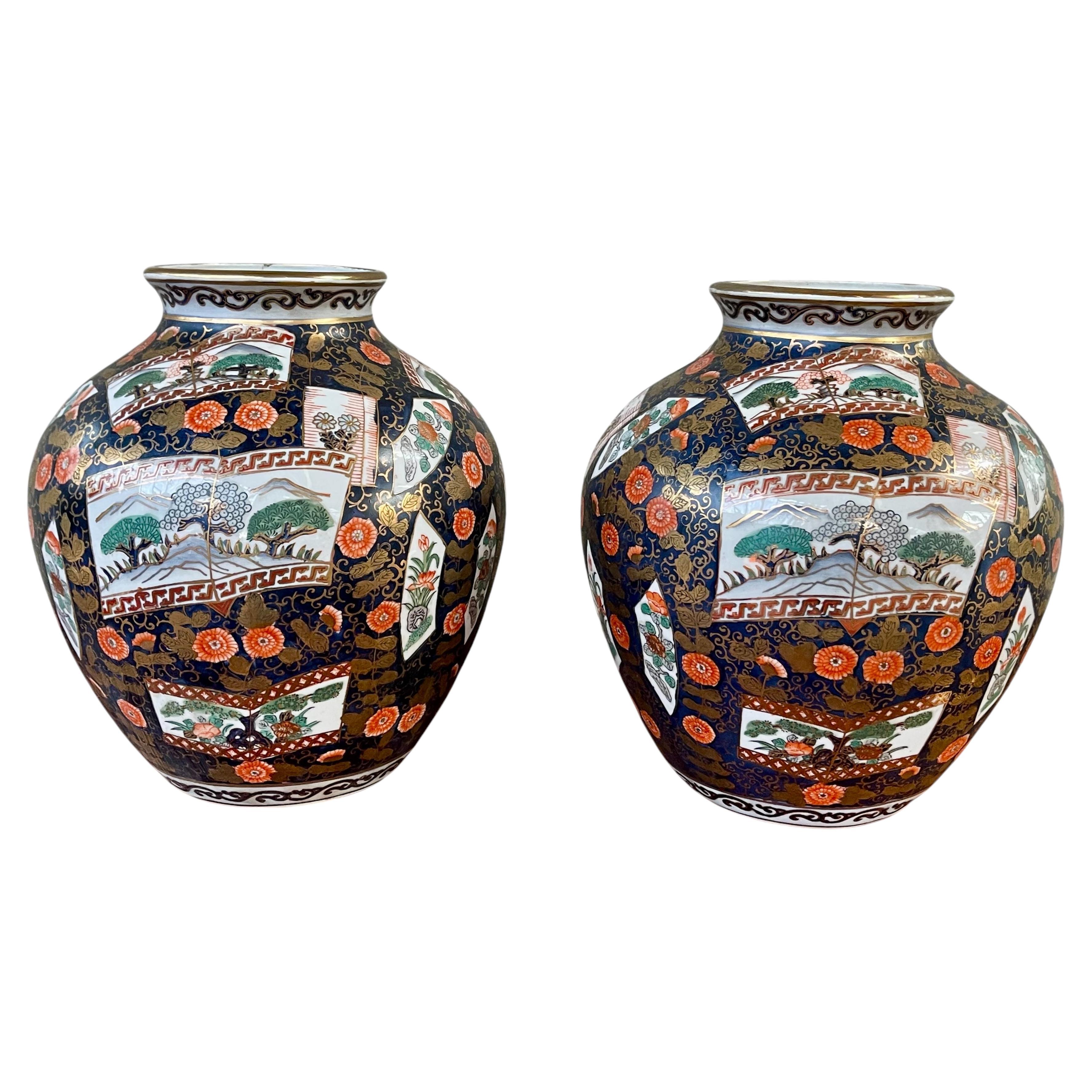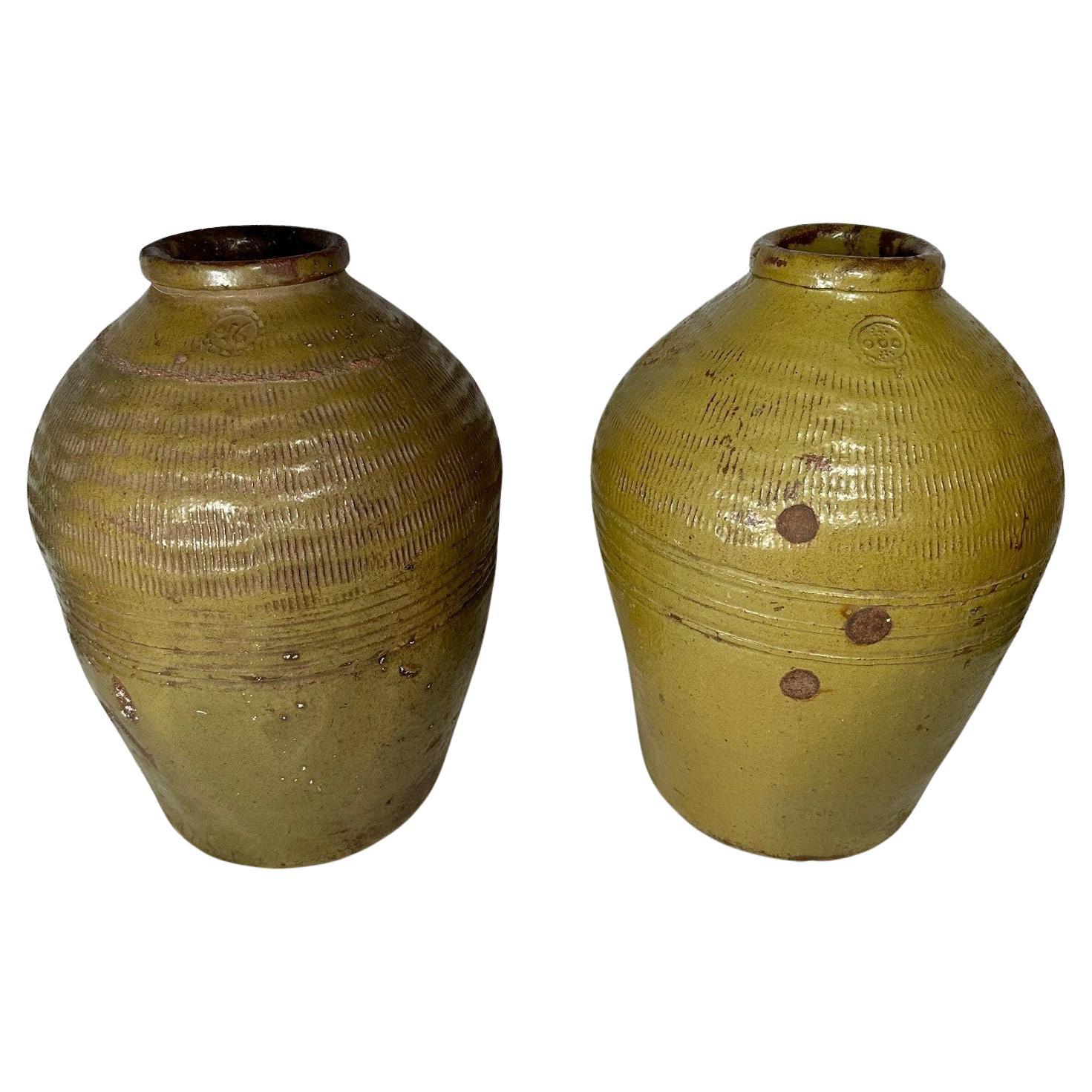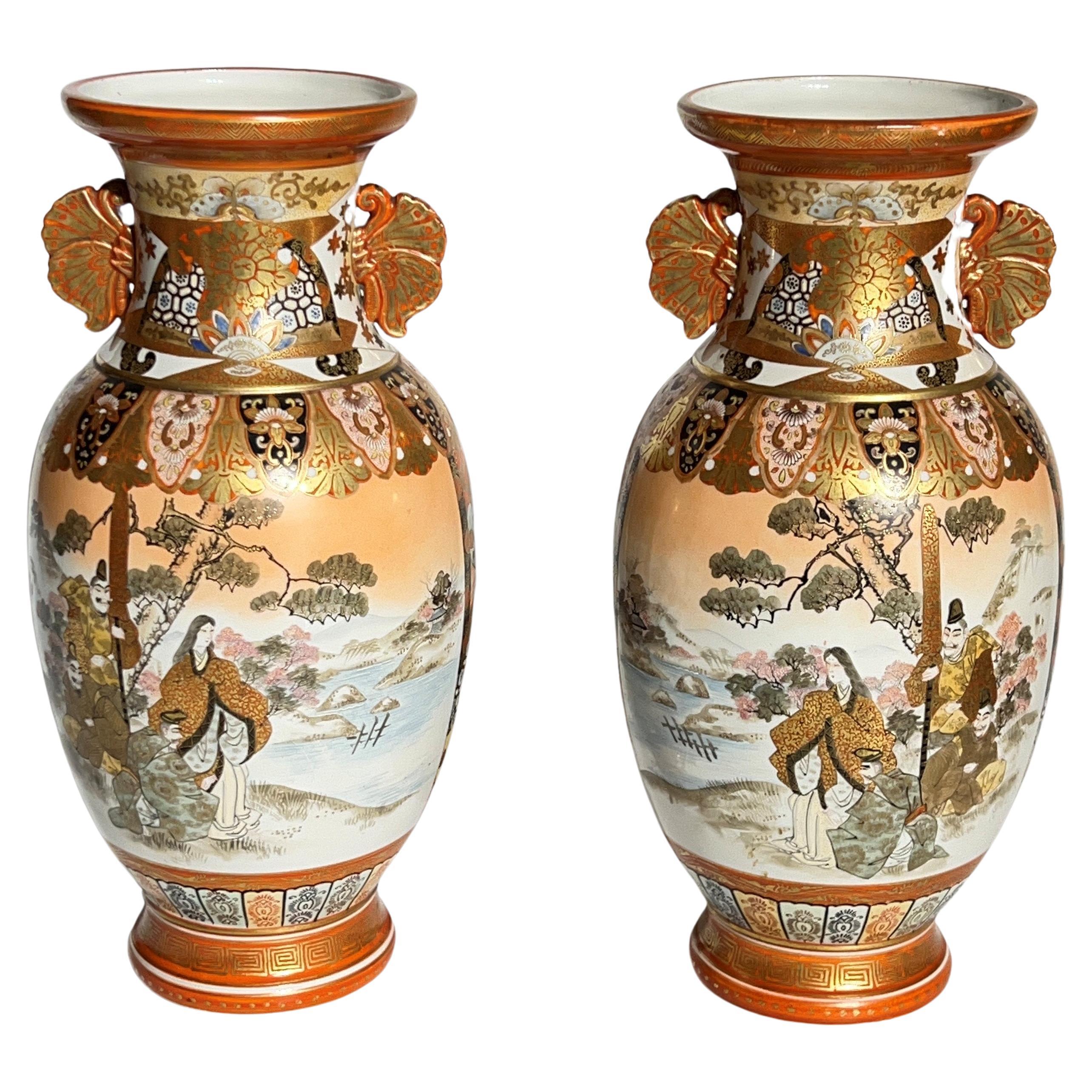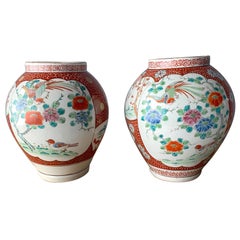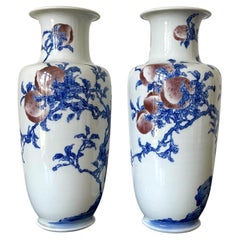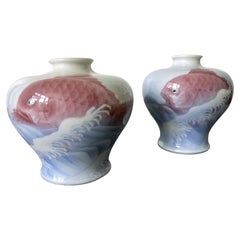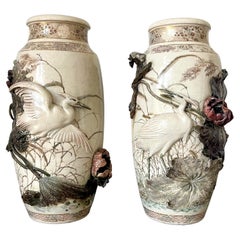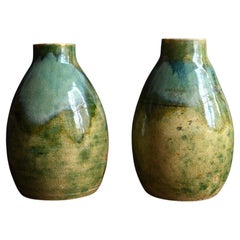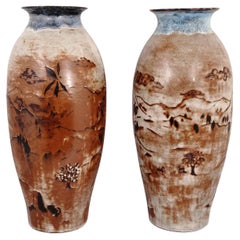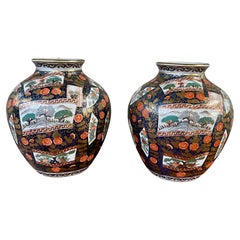Items Similar to Set of Two Antique Japanese Ceramic Ko-Seto Chaires
Want more images or videos?
Request additional images or videos from the seller
1 of 12
Set of Two Antique Japanese Ceramic Ko-Seto Chaires
$2,800per set
£2,111.21per set
€2,432.88per set
CA$3,884.36per set
A$4,352.40per set
CHF 2,265.59per set
MX$53,244.93per set
NOK 28,757.48per set
SEK 27,161.09per set
DKK 18,161.93per set
Shipping
Retrieving quote...The 1stDibs Promise:
Authenticity Guarantee,
Money-Back Guarantee,
24-Hour Cancellation
About the Item
A collection of two ceramic chaires (Tea caddies) of Ko-seto ware type from Edo period Japan circa 17-18th century. This type of small jar was made of stoneware in old Seto kilns in Gifu prefecture. Its specific form with raised shoulder and small opening was designed to store green tea powder (matcha). Prototyped from Chinese chaire, the container was considered the most important piece of the accoutrement for Chado (tea ceremony).
These two small jars were from the same collection and complement each other well. They both feature a mottled brown ash glaze with dripping and splashing pattern from the shoulder down. The lower part of the jar was left unglazed, typical for the ko-seto chaire. The taller Charie has a potter's line circumventing the midbody and detectable wheel grooves. The random abstract glaze pattern created a wabi-sabi effect desired by Chado masters. Both chaires retain their old ivory lids that are likely original and also old collecting paper labels with Kanji and English scripts as shown.
The taller one measures approximately 3.35" h x 2" d, while the shorter one is about 2.75"h x 2.45" d.
Similar Ko-seto Chaires can be found in the collection of Metropolitan Musuem of Art in NYC Object Number: 29.100.655a, b and The British Musuem 1947,0418.5.
- Dimensions:Height: 3.35 in (8.51 cm)Diameter: 2 in (5.08 cm)
- Sold As:Set of 2
- Style:Edo (Of the Period)
- Materials and Techniques:
- Place of Origin:
- Period:
- Date of Manufacture:17-18th Century
- Condition:Wear consistent with age and use. Fine antique condition with minor wear on the base. The taller one has a tiny pinhole on the base. The lids show more patina naturally.
- Seller Location:Atlanta, GA
- Reference Number:1stDibs: LU945045282382
About the Seller
4.9
Platinum Seller
Premium sellers with a 4.7+ rating and 24-hour response times
Established in 2006
1stDibs seller since 2010
564 sales on 1stDibs
Typical response time: <1 hour
- ShippingRetrieving quote...Shipping from: Atlanta, GA
- Return Policy
Authenticity Guarantee
In the unlikely event there’s an issue with an item’s authenticity, contact us within 1 year for a full refund. DetailsMoney-Back Guarantee
If your item is not as described, is damaged in transit, or does not arrive, contact us within 7 days for a full refund. Details24-Hour Cancellation
You have a 24-hour grace period in which to reconsider your purchase, with no questions asked.Vetted Professional Sellers
Our world-class sellers must adhere to strict standards for service and quality, maintaining the integrity of our listings.Price-Match Guarantee
If you find that a seller listed the same item for a lower price elsewhere, we’ll match it.Trusted Global Delivery
Our best-in-class carrier network provides specialized shipping options worldwide, including custom delivery.More From This Seller
View AllNear Pair of Antique Japanese Arita Export Ceramic Jars
Located in Atlanta, GA
A near pair Hizen pottery jars from Artia Japan, circa mid-19th century of the Meiji Era. Heavy stoneware construction with overglaze enamels that was inspired by Chinese WuCai from ...
Category
Antique Mid-19th Century Japanese Japonisme Ceramics
Materials
Ceramic
Pair of Rare Porcelain Commemorative Vases by Makuzu Kozan Meiji Period
By Makuzu Kozan
Located in Atlanta, GA
A pair of porcelain vases in classic form, decorated with underglaze blue and copper red painting by Imperial potter Makuzu Kozan. Also known as Miyagawa Kozan (1842–1916), Makuzu was one of the most established and collected ceramist known to the west from Meiji Period.
The vases are in a classic Chinese form called "Bang Chu Ping" (grain-mallet vase...
Category
Vintage 1910s Japanese Japonisme Ceramics
Materials
Ceramic
One of The Two Japanese Ceramic Vases Makuzu Kozan Meiji Period
By Makuzu Kozan
Located in Atlanta, GA
Two small nearly identical ceramic vases by Japanese Meiji imperial potter Makuzu Kozan (1842-1916), circa 1890-1900s. The vases were made in the form of jarlet with swelled shoulder...
Category
Antique Late 19th Century Japanese Japonisme Ceramics
Materials
Ceramic
Rare Pair of Early Period Makuzu Kozan Takauki High-Relief Vases
By Makuzu Kozan
Located in Atlanta, GA
A stunning pair of ceramic vases with gilt, paint and high-relief decoration by imperial artist Makuzu Kozan (1842-1916, also known as Miyagawa Kozan) circa 1876-81 (late Meiji period). These vases belong to early period (1876-1881) of Kozan's repertoire, during which time the high relief sculpturing (known as Takauki ware) was used as a distinguished technique on top of the traditional gilt and paint ornaments of satsuma ware. Due to the relatively limited production and the fragile nature of these wares, not a large quantity of the examples remained in the first place, not mentioning a fine matching signed pair in such impressive sizes.
Not only a rarity, this pair of vases is also superb in workmanship, thus the fine example of the work from that short and unique period of the artist's career before he switched to the underglaze period. In a conceptually mirrored fashion, the surface is richly decorated with flying cranes among large lotus leaves and flower, like an idyllic aqua scenery of pure poetry on a circular scroll. The high-relief appliques were rendered and composed in realistic fashion but with a dramatic touch. They are literally about to break the surface free, alive and in motion. The dark colors of the glaze were used to set a moody tone. The approach to create this type of ornamentations is more akin to sculpturing an ink painting in three-dimension than ceramic making. It is not hard to imagine the demand of both the artistry and the technique.
Both vases were signed as "Makuzu Kozan Kiln" and each further with another name and seal, which are most likely the individual artist involved in the making process. Similar signatures can be seen in the reference book below.
For similarly Takauki vases, see Miyagawa Kozan Makuzu...
Category
Antique 1870s Japanese Japonisme Ceramics
Materials
Ceramic
Rare Antique Japanese Ceramic Takatori Ware Hoso Mizusashi
Located in Atlanta, GA
This small ceramic container from Edo period Japan circa 1800s was made in the Takatori Kilns in Fukuoka Prefecture. This type of small, tall jar with a lid was specifically created ...
Category
Antique 19th Century Japanese Edo Ceramics
Materials
Ceramic
Japanese Ceramic Seto Tea Leaf Tsubo Jar Edo Period
Located in Atlanta, GA
A Japanese glazed ceramic jar with a lacquered wood lid circa 19th century of late Edo to early Meiji Period. The stoneware tsubo was used as a storage vessel for produce such as tea...
Category
Antique 19th Century Japanese Edo Ceramics
Materials
Ceramic
You May Also Like
Set of two small Japanese antique pottery vases/Made in 1804/Mino ware
Located in Sammu-shi, Chiba
This is a pair of small Mino ware flower vases, believed to have been crafted in the late Edo period, specifically in the first year of the Bunka era (1804). The inside of the wooden...
Category
Antique Early 19th Century Japanese Edo Vases
Materials
Pottery
Pair Large 28" Mid-Century Modern Japanese Ceramic Vases
Located in New York, NY
Pair of highly decorative and fine quality vintage glazed ceramic vases in the Japanese style from the mid 20th century, decorated with mountain landscapes.
Category
Late 20th Century Japanese Ceramics
Materials
Ceramic
Pair of Japanese Vases, 19th Century
Located in Roma, IT
Beautiful pair of Japanese vases. Embossed and chiseled bronze with floral motifs.
Meiji period.
This artwork is shipped from Italy. Under existing legislation, any artwork in Italy...
Category
Antique 19th Century Japanese Meiji Vases
Materials
Bronze
$5,854 / set
Pair of 20th Century Japanese Amari Vases
Located in Southall, GB
These 20th-century Japanese Amari vases in navy with gilt-painted floral and woodland scenes are a beautiful example of Japanese craftsmanship and artistic expression, blending tradi...
Category
Late 20th Century Ceramics
Materials
Ceramic
$800 / item
Pair 19th Century Chinese Glazed Pickling Jars.
Located in Vero Beach, FL
Pair 19th Century Chinese Glazed Pickling Jars.
Each of these glazed ceramic jars have small, hemmed openings, linear striations pressed in the upper shoulders and a circular stamp....
Category
Antique 19th Century Chinese Chinese Export Ceramics
Materials
Ceramic
$1,120 Sale Price / set
20% Off
Pair Japanese Kutani Porcelain Vases
Located in New York, NY
Pair of exquisite Japanese Kutani vases with fine enameled and gilt decorations, signed Kutani-Saku (九谷作), measuring 14 1/2 by 6 1/2 inches. Each in excellent condition.
Category
Antique Early 1900s Japanese Ceramics
Materials
Porcelain
$2,200 / set
More Ways To Browse
Edo Period Japan
Antique Kilns
Kiln Japanese
Used Ceramic Kilns
Antique Script
Ceramic Containers
Japanned English Furniture
Japanese Containers
Japanese Ivory
Japanese China Set
Abstract Japanese Ceramics
Japanese Labels
Wabi Sabi Ceramic
Japanese Ash
Asian Containers
Japanese Lidded Jar
Antique Lidded Containers
Short Antique Chairs
